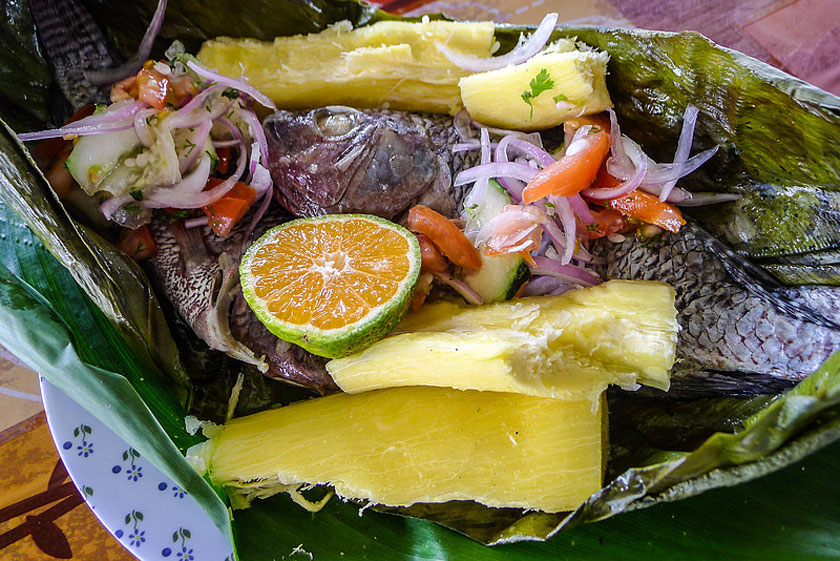With the Ecuadorian Amazon laced with wide rivers and numerous streams, it’s no wonder that freshwater fish is one of the native people’s staples. Among them is a dish called maito, the local, quintessential fish dish cooked over coals in bijao leaves.
This is a dish you simply can’t miss while you are in the Ecuadorian Amazon. For about $4 you can treat yourself to a full dish, found in markets in the Oriente, as the Ecuadorian Amazon region is known. What exactly is it? Let’s take a look. [pagebreak]
1. The Fish: (Red) Tilapia
While maito can be prepared with different types of fish, the most common type used is (red) tilapia. Tilapia is the collective name for a type of freshwater fish that originated in Africa and the Middle East. The fish was introduced to, among other places, South American countries including Ecuador, for fish farming. It now wildly inhabits rivers and streams after some wily fish escaped from the aquaculture pens and set out for freedom.
2. The Leaf: Hoja de Bijao
El Bijao is a plant that grows in the tropics of Latin America, and it’s often used to wrap food for cooking. While the leaves may look like those of the plantain tree, they are not the same; bijao leaves are narrower and not as bitter. They are indispensable in the Amazonian cuisine; apart from maito, you’ll also see chicken wrapped in these leaves being cooked on the grill. [pagebreak]
3. Side dishes
The white-fleshed fish is served with lemon, boiled or fried cassava (yucca), and tomato-onion salad. If the fish is too bland for your taste, spice it up with a bit of ají, the hot pepper sauce you’ll find on any restaurant table in Ecuador.
4. Preparation
1. First the leaf is moved back and forth above the fire, without burning it, to soften the veins in order to make the leaf easier to fold.
2. The fish is seasoned with salt and garlic, and is put on the leaf.
3. The leaf is tied together with sapan, a fiber from a tropical forest tree.
4. The dish is roasted on the grill over fire or coal and the fish is cooked in its own juices until it’s so soft it will melt on your tongue.


![Making Mealtime Matter with La Familia: Easy Sofrito [Video]](https://thelatinkitchen.com/wp-content/uploads/2015/10/sofrito-shutterstock__0-500x383.jpg)
![Easy Latin Smoothies: Goji Berry Smoothie [Video]](https://thelatinkitchen.com/wp-content/uploads/2015/12/goji_berry-shutterstock_-500x383.jpg)
















![Fun and Fast Recipes: Fiesta Cabbage Salad [Video]](https://thelatinkitchen.com/wp-content/uploads/2015/11/fiesta_cabbage_slaw-shutterstock_-500x383.jpg)









